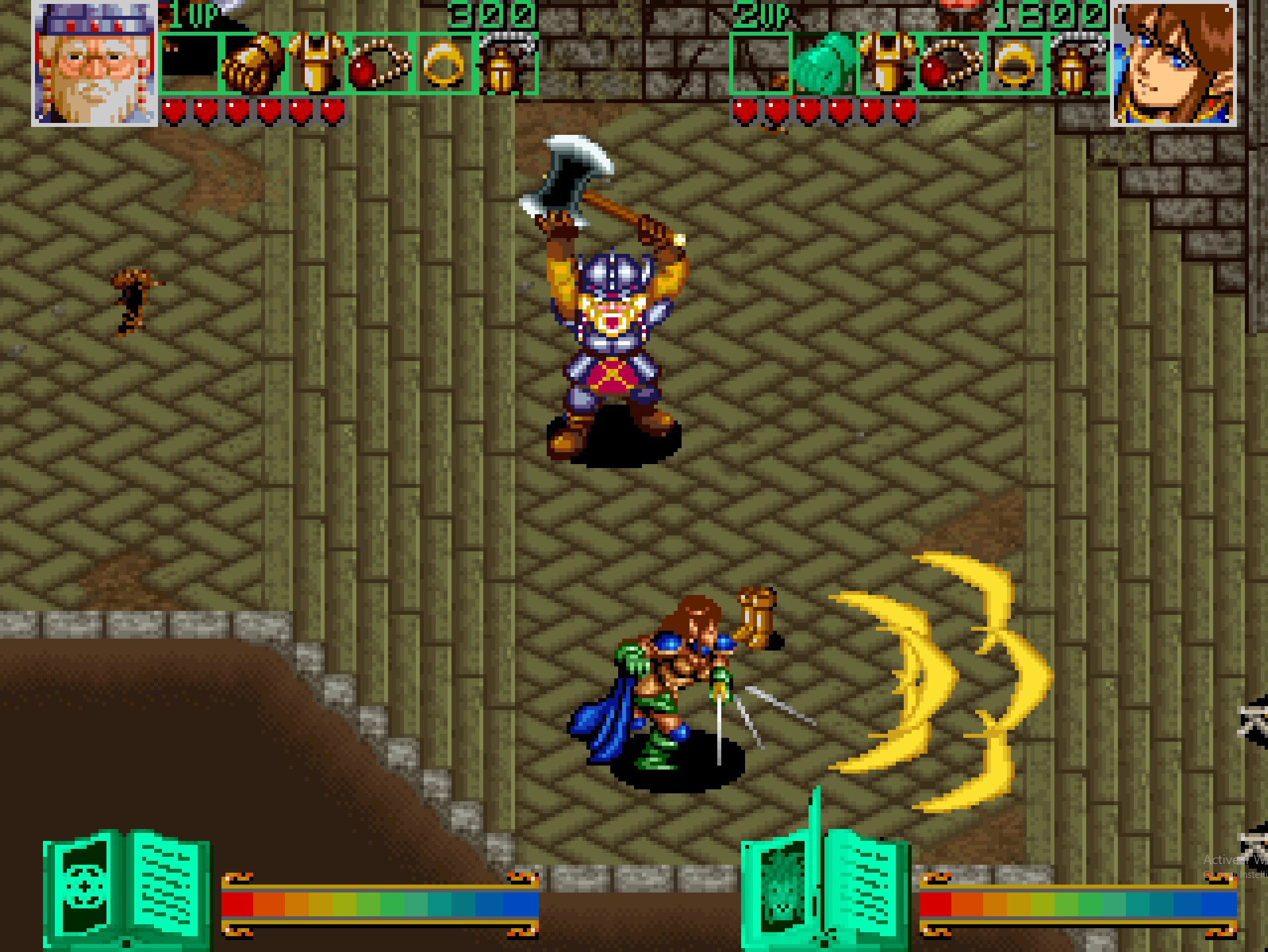Introduction
Released in 1992, Wizard Fire is a fantasy-themed beat 'em up arcade game by Data East. Also known as Dark Seal II, the game is the sequel to Gate of Doom and features cooperative action in a dark medieval setting filled with monsters, magic, and myth. Its mix of RPG elements, unique character classes, and atmospheric visuals made it a memorable entry in the early '90s arcade scene.

Development and History
- Developer: Data East
- Publisher: Data East
- Release Date: 1992
- Hardware: DECO32 arcade system
Wizard Fire was built on the momentum of Gate of Doom (1990), a game that mixed hack-and-slash mechanics with fantasy role-playing themes. The sequel kept the isometric perspective but introduced improved graphics, voice samples, and smoother animations.
It was designed during a period when fantasy-themed arcade games were rising in popularity, influenced by titles like Golden Axe and Dungeons & Dragons: Tower of Doom. Despite fierce competition, Wizard Fire stood out thanks to its class variety and mythic atmosphere.

Gameplay Video
Gameplay and Mechanics
Players choose from five distinct characters, each with their own strengths and magical abilities:
- Knight: Balanced melee fighter with solid defense
- Wizard: Long-range magic user with powerful spells
- Elf: Agile character with ranged attacks
- Bard: Support character with unique attack animations
- Dwarf: Slow but strong melee fighter
Key gameplay elements:
- Isometric action: Allows diagonal movement and multi-directional attacks
- Magic scrolls: Can be collected and used for screen-clearing spells
- Co-op play: Up to two players can fight together
- Item pickups: Health, magic boosts, and points
- Voice narration: Adds to the dark fantasy ambiance
Levels are filled with skeletons, demons, sorcerers, and fantasy bosses, each requiring different strategies to defeat.

Cultural Impact and Legacy
- Regarded as a cult favorite among fantasy arcade fans
- Re-released in later years as part of Data East retro collections
- Included in Johnny Turbo’s Arcade line for Nintendo Switch and PS4
- Its art style and class system were noted for prefiguring later hack-and-slash RPGs

Fun Facts
- Known as Dark Seal II in Japan and some regions
- The Bard’s animations were unusually expressive for an arcade game of its time
- Its voice-acted intro became a recognizable feature among fans
- The game’s box art for Western regions was notably more aggressive and detailed than its Japanese counterpart

Conclusion
Wizard Fire offered a magical mix of action, RPG mechanics, and atmospheric presentation. Though overshadowed by bigger names in the genre, it carved out a unique niche with its memorable characters and challenging gameplay. A true underdog of the fantasy arcade era.
Want to Go Deeper Into Arcade History?
If this game left you craving more, dive into the complete stories behind some of the most iconic arcade genres and franchises. These articles explore the rise, innovation, and legacy of the games that shaped arcade culture:
- Top 25 Hidden Gem Arcade Games of All Time - Unearth the overlooked classics that still shine bright for arcade enthusiasts today
- Top 25 Beat ’Em Up Arcade Games of All Time – Discover the ultimate ranking of the greatest beat ’em ups ever to hit arcades
- The History of Beat ’Em Up Arcade Games – From Double Dragon to Final Fight, here’s how brawlers ruled the late ’80s.
- Donkey Kong’s Rise to Fame: How a Desperate Bet Created a Gaming Legend – The untold story of how Nintendo turned failure into a global icon, launching Mario, Miyamoto, and a new era of arcade storytelling
- The Economics of Arcade Gaming: The Golden Age of Coin-Op – This article explores the full arc of arcade economics: the explosive rise, the industry-shaking crash, and the waves of reinvention that kept the business alive
- The Complete History of Mortal Kombat Arcade – How a gritty fighter became a pop culture phenomenon.

